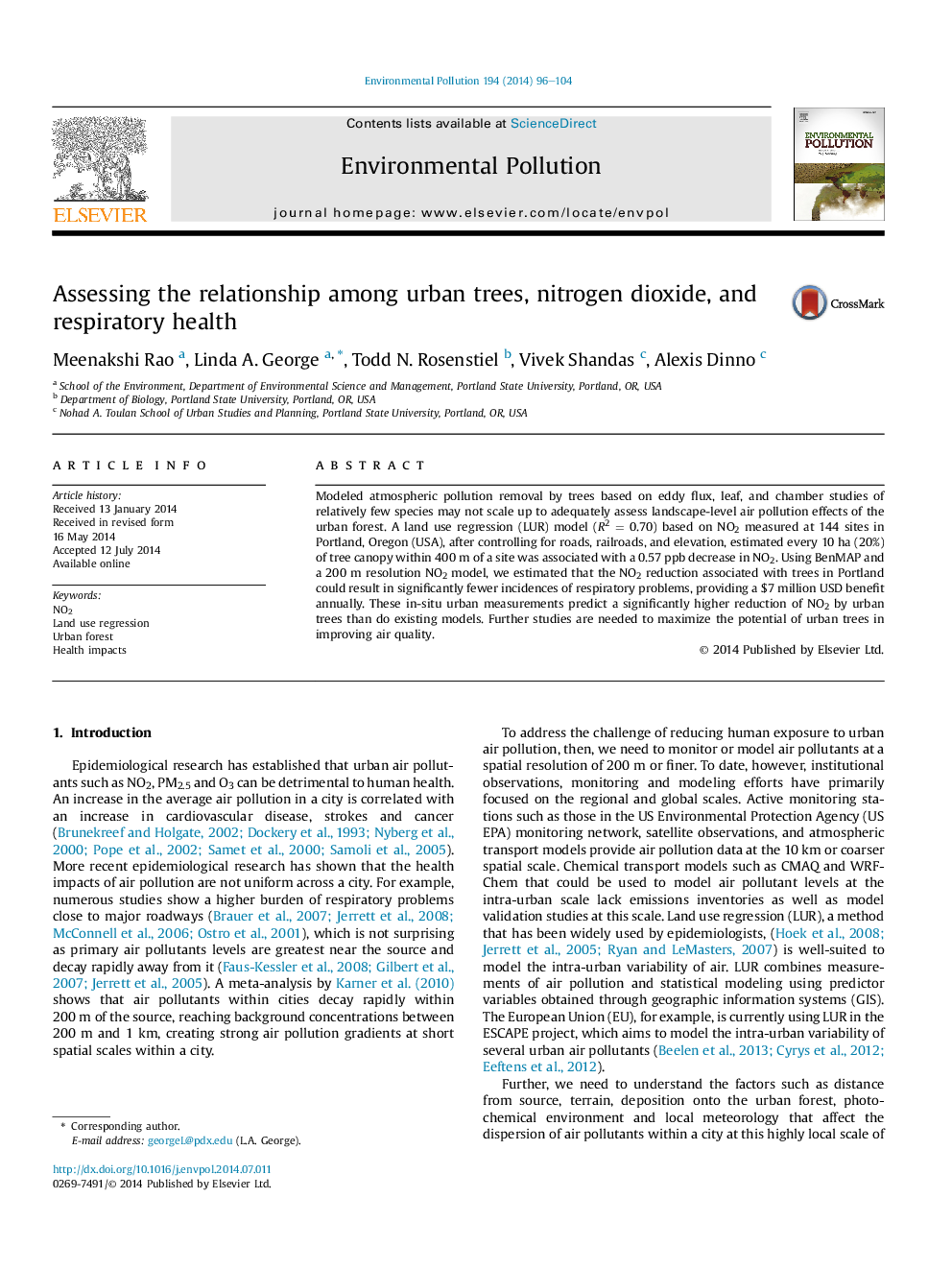| Article ID | Journal | Published Year | Pages | File Type |
|---|---|---|---|---|
| 6317807 | Environmental Pollution | 2014 | 9 Pages |
Abstract
Modeled atmospheric pollution removal by trees based on eddy flux, leaf, and chamber studies of relatively few species may not scale up to adequately assess landscape-level air pollution effects of the urban forest. A land use regression (LUR) model (R2Â =Â 0.70) based on NO2 measured at 144 sites in Portland, Oregon (USA), after controlling for roads, railroads, and elevation, estimated every 10Â ha (20%) of tree canopy within 400Â m of a site was associated with a 0.57Â ppb decrease in NO2. Using BenMAP and a 200Â m resolution NO2 model, we estimated that the NO2 reduction associated with trees in Portland could result in significantly fewer incidences of respiratory problems, providing a $7Â million USD benefit annually. These in-situ urban measurements predict a significantly higher reduction of NO2 by urban trees than do existing models. Further studies are needed to maximize the potential of urban trees in improving air quality.
Related Topics
Life Sciences
Environmental Science
Environmental Chemistry
Authors
Meenakshi Rao, Linda A. George, Todd N. Rosenstiel, Vivek Shandas, Alexis Dinno,
